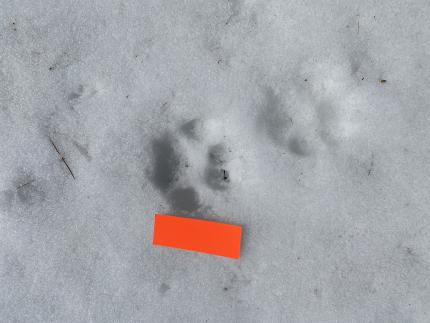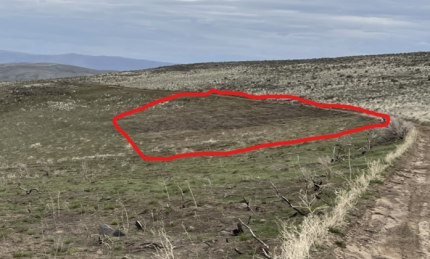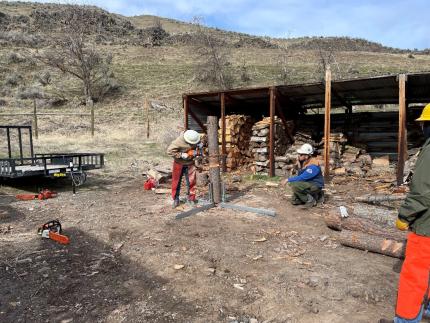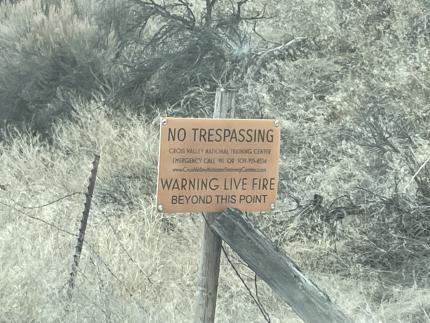Managing Wildlife Populations
District 8 Assistant District Biologist Wampole and Conflict Specialist Wetzel confirmed wolf presence of an uncollared individual in the district. District biologists will continue to monitor the area for wolf activity.


District 4 Wildlife Biologist Fidorra worked with partners and coordinated the annual meeting on artificial burrow management for regional partners in the Pacific Northwest. A recommendation from the group was to create a broader Pacific Northwest Burrowing Owl Conservation Working Group for Oregon, Washington, Idaho, and British Columbia partners in a more recurring format.
L.T. Murray Elk Feeding: The L.T. Murray crew fed elk a few days until there was enough spring grass growth to keep the elk off the Robinson and Joe Watt feed sites.
Conflict staff members and supervisors attended the Human-Carnivore Interaction Response Workshop held in Moses Lake. The training included Depredation Investigations, Cougar/Wolf/Bear Ecology, Capture and Immobilization, and other presentations including Forensic Entomology.


Conserving Natural Landscapes
Hoover Acquisition: Manager Hughes and Assistant Manager Taylor have been working together on the management plans for the Hoover Acquisition now that it has gone through. Hughes and Taylor met with the landowner to stake out an area where the boundary fence will be built on private ground. The landowner has agreed to give WDFW a fencing easement in this section. This is being done to avoid building the fence through the property line that goes into a marsh. In addition, Hughes coordinated cultural surveys done for the boundary fence that the Wenas Wildlife Area team will be building this spring. Recreation Specialist Frame and Technician Stoltenow cleared brush where a section of the fence will be built.
Water rights were a lengthy part of this acquisition. The Wenas Wildlife Area and the landowner are sharing water rights of an artesian well. The wildlife area plans to use a minimal amount of water for spraying weeds and emergency fire use. Manager Hughes is working on developing a water use agreement to be signed between the landowner and Fish and Wildlife due to the shared well. Taylor installed a butterfly valve into a 6” steel irrigation pipe. The valve installed will be used to shut off water going onto the newly acquired property.
Pumphouse Road Post Fire Area: Assistant Manager Winegeart and Natural Resource Specialist Nass assessed the Pumphouse Road post fire area for early spring vegetation and noxious weed growth. Areas that had potential for drill seeding and sagebrush plugs were identified for cultural review and anticipated seeding in the fall. A small site that had a Rimsulfuron application in the fall showed promise but a close examination of what's growing by May 1 will give a better idea of how useful the chemical will be under similar circumstances in the future.

Assistant Manager Winegeart had Central Valley Helicopters apply 1,800 pounds of native seed mix to areas within the Vantage Highway Fire footprint.
Habitat Program Support: District 4 Wildlife Biologist Fidorra conducted site visits with Habitat Biologist Makis to sites of future proposed development. Fidorra recorded inactive ground-squirrel burrows onsite and some nice intact quality shrubsteppe with surprisingly high sagebrush recruitment and intact soil crust. The site will soon be a housing development and WDFW will request mitigation, which might occur. Fidorra also participated in calls and meetings for various solar energy proposals.

District 4 Wildlife Biologist Fidorra participated in the demonstration of the Least Cost Solar Siting product to be released by Audubon and Partners in April. The product identifies high priority conservation lands as well as those where wildlife concerns are lower and make development more suitable for energy projects. The product should be released April 12 to the public following this external review period.
Other
Chainsaw Safety Training: Recreation Specialist Frame and Technician Stoltenow attended and successfully completed National Wildfire Coordinating Group (NWCG) Course S-212. This course is designed to display proper chainsaw techniques and use. Chainsaw safety is a large part of the course. Many other Region 3 WDFW employees attended the class as well.
Assistant Manager Winegeart, Natural Resource Specialist Nass, and Natural Resource Technician Blore attended S-212 chainsaw training in Yakima. The crew members learned how to properly sharpen a chain, tree felling techniques, and forest stand assessment for general safety while cutting, working, or just hiking in vegetation that has potential for overhead dangers.



New Cambell Property Signage: Winegeart and Nass noticed a new gate and posted sign on the Cambell property which borders the Green Gate Subunit on the Quilomene Unit. Upon inspection, they noticed the property has been sold and a physical/firearm training center is planned for the site. Below is some information available on the web about the planned facilities. No groundwork appears to have taken place at this time.

Cross Valley National Training Center – Cross Valley Training


The L.T. Murray Wildlife Area’s new track loader arrived.

Natural Resource Technician Blore and Natural Resource Workers Hamlin and Schneider installed a new metal gate with metal brace points to replace the wire and wood gate that burned last year at the Corrals parking area on the Whiskey Dick Unit.

L.T. Murray Natural Resource Workers Hamlin and Schneider continued to pick up wire on the Whiskey Dick and Quilomene units.
Natural Resource Technician Blore checked on the condition of culvert in need of replacement on Parke Creek Road.

Providing Education and Outreach
Burrowing Owl Presentation at Sandhill Crane Festival: District 4 Wildlife Biologist Fidorra was invited to present information on burrowing owls at the Annual Othello Sandhill Crane Festival. The presentation was improved after many years using the Public Affairs WDFW template and was well received by approximately 100 people. A lively Q&A session followed. There was no WDFW outreach table this year, as their contacts for the department were out of date. Fidorra provided them with Team Ephrata information to rectify this in the future.

Backcountry Horseman Rendezvous: Lands Operations Manager Finger, Wenas Wildlife Area Manager Hughes, and Methow Wildlife Area Manager Troyer attended the Backcountry Horseman Rendezvous in Ellensburg. A Fish and Wildlife booth was displayed to provide outreach and answer questions from the public. The Wenas Wildlife Area works with the Wenas Valley Backcountry Horseman Chapter to manage the Hardy Canyon Trail. The Wenas Valley Backcountry Horseman adopted this trail for routine maintenance every spring. It is a popular trail for wildlife viewing, horseback riding, and hiking. Outside of the work done on the Wenas there are many other Backcountry Horseman Chapters that help with parking area and trail maintenance projects in collaboration with Fish and Wildlife.
